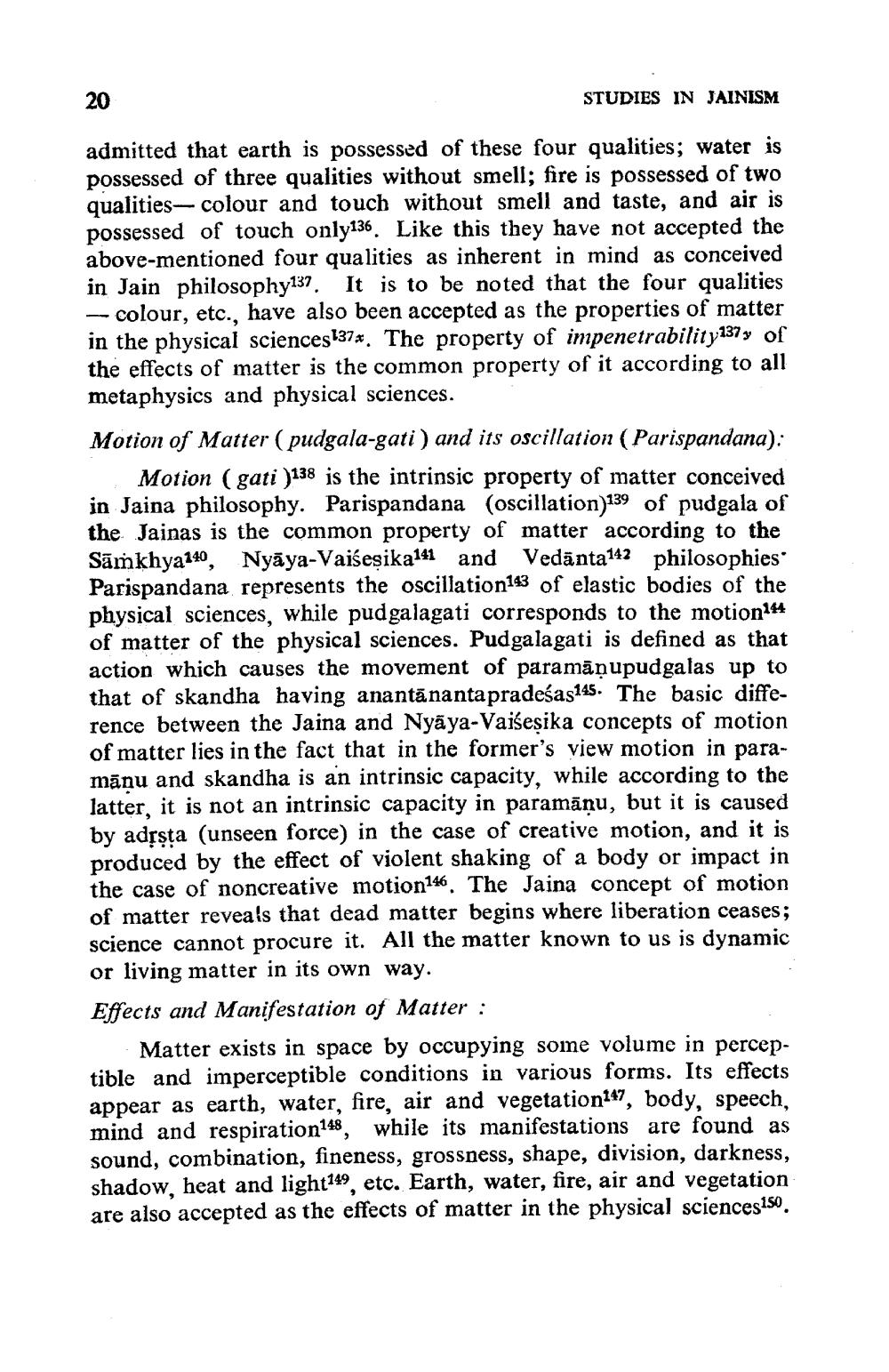________________
20
STUDIES IN JAINISM
admitted that earth is possessed of these four qualities; water is possessed of three qualities without smell; fire is possessed of two qualities- colour and touch without smell and taste, and air is possessed of touch only136. Like this they have not accepted the above-mentioned four qualities as inherent in mind as conceived in Jain philosophy137. It is to be noted that the four qualities --- colour, etc., have also been accepted as the properties of matter in the physical sciences137x. The property of impenetrability137 y of the effects of matter is the common property of it according to all metaphysics and physical sciences. Motion of Matter (pudgala-gati ) and its oscillation (Parispandana):
Motion (gati )138 is the intrinsic property of matter conceived in Jaina philosophy. Parispandana (oscillation)139 of pudgala of the Jainas is the common property of matter according to the Sāmkhya140 Nyāya-Vaibesika141 and Vedānta142 philosophies Parispandana represents the oscillation143 of elastic bodies of the physical sciences, while pudgalagati corresponds to the motion144 of matter of the physical sciences. Pudgalagati is defined as that action which causes the movement of paramānupudgalas up to that of skandha having anantānanta pradeśas145. The basic difference between the Jaina and Nyāya-Vaišesika concepts of motion of matter lies in the fact that in the former's view motion in paramānu and skandha is an intrinsic capacity, while according to the latter, it is not an intrinsic capacity in paramāņu, but it is caused by aděsta (unseen force) in the case of creative motion, and produced by the effect of violent shaking of a body or impact in the case of noncreative motion146. The Jaina concept of motion of matter reveals that dead matter begins where liberation ceases; science cannot procure it. All the matter known to us is dynamic or living matter in its own way. Effects and Manifestation of Matter :
Matter exists in space by occupying some volume in perceptible and imperceptible conditions in various forms. Its effects appear as earth, water, fire, air and vegetation147, body, speech, mind and respiration148, while its manifestations are found as sound, combination, fineness, grossness, shape, division, darkness, shadow, heat and light149, etc. Earth, water, fire, air and vegetation are also accepted as the effects of matter in the physical sciences 150.




